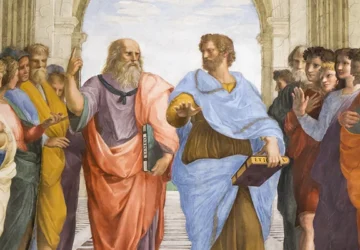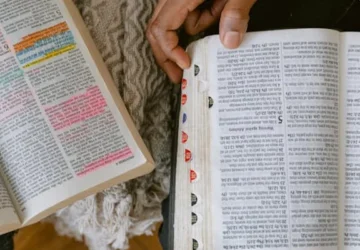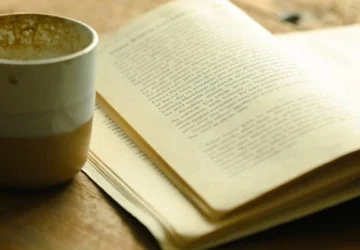
What Is Close Reading and Why It Matters in Modern Education
We are drowning in words.
We read more today than at any other point in human history. We scroll through articles. We skim headlines. We digest hot takes, social media posts, and endless comment threads. Our brains, rewired by the digital age, have become incredibly efficient at one specific skill. Skimming.
We have trained ourselves to hunt for keywords, to extract the gist, to get the point in three seconds or less and move on. We read for information, not for understanding.
This new habit, while efficient for sorting email, has created a profound intellectual crisis. We are losing the ability to think.
In this environment, the old academic tool known as “close reading” is no longer just a method for analyzing literature. It has become a necessary act of intellectual resistance. It is the single most important antidote we have to the shallow, reactive thinking of the modern age.
But what is close reading, really? It is not just “reading carefully.” It’s not about liking a book or even agreeing with it.
It is the slow, surgical, and deliberate act of dismantling a text to understand how it works. It is the art of seeing. It is the process of moving past what a text says (the plot) and discovering how it says it (the mechanics) and why it says it that way (the meaning).
This guide will explain this vital method. But more importantly, it will argue why is close reading important now, more than ever, for anyone who wants to think clearly in a world designed to make them skim.

What Close Reading Is
To truly grasp the method, we first have to clear away the misconceptions.
Close reading is not a plot summary. A plot summary just answers “What happened?” Close reading asks, “Why did the author use that specific word to describe what happened?”
It is not a hunt for the “one right answer” or “what the author intended.” The author’s intent is often unknowable. The text, however, is right there. Close reading is an evidence-based investigation of the words on the page.
It is not (at least initially) about your personal feelings. “I loved this character” or “This part was boring” is a reaction, not an analysis. Close reading is about the mechanics that caused your reaction. Why did you find it boring? What did the author do (or fail to do) with the language to create that feeling?
So, what is close reading?
It is a forensic examination. It is the literary equivalent of a biologist placing a sample under a microscope. You are not just looking at the “thing”; you are looking at the cells that make up the thing.
The core process of close reading involves slowing down (to a speed that feels almost painfully slow) and using a pencil to “interrogate” the text. You are looking for:
-
Patterns: Repetitive words, images, or ideas. (e.g., “Why does the author mention ‘blood’ or the color ‘red’ five times in this one chapter?”)
-
Contradictions & Ambiguities: Where is the text unclear? Where does a word have two possible meanings? Where does a character say one thing but do another? (e.g., “The narrator calls the house ‘beautiful,’ but every word he uses to describe it, like ‘shadowed’ and ‘cold,’ suggests the opposite.”)
-
Diction (Word Choice): This is the heart of it. Why this word and not its synonym? What is the difference between “house” and “home”? Between “walked,” “slinked,” “strutted,” and “shuffled”?
-
Syntax (Sentence Structure): Why is this sentence long and flowing, while the next one is short, sharp, and choppy? (e.g., “Long sentences create a feeling of breathlessness or confusion; short sentences feel like a punch.”)
-
Figurative Language: Metaphors, similes, personification. How do these devices color the meaning? (e.g., “Calling the city a ‘concrete jungle’ is not just descriptive; it’s an argument about its nature.”)
You are, in short, looking for anything that seems “weird” or “interesting.” Then you formulate a question, and you use the text itself as the only source of evidence to build an answer.

A Practical Example: Close Reading the First 60 Words of “1984”
Let’s move from theory to practice. Here is the famous opening of George Orwell’s “1984.”
The “skim” read takes about five seconds. “A guy named Winston goes into his apartment on a windy day. The clock is broken.”
A close reading, however, reveals the entire thesis of the novel in just two sentences.
The Text: “It was a bright cold day in April, and the clocks were striking thirteen. Winston Smith, his chin nuzzled into his breast in an effort to escape the vile wind, slipped quickly through the glass doors of Victory Mansions, though not quickly enough to prevent a swirl of gritty dust from entering along with him.”
The Close Read (The Interrogation):
-
“It was a bright cold day in April”: Stop right there. This is a contradiction. “Bright” and “April” suggest spring, warmth, hope. “Cold” negates it. This is our first clue. The world is wrong. It is not a “dark and stormy night”; it is a “bright” day that is also cold, which is more unsettling. It’s a promise of life that is immediately broken.
-
“and the clocks were striking thirteen”: This is the masterstroke. It’s not just “1:00 PM.” “Thirteen” is a number that does not exist on a clock face. It is unnatural. It is military (1300 hours). It is ominous (the unlucky number). In this single detail, Orwell tells us that the State has broken and reframed reality itself. Time, the most basic law of nature, is now whatever the Party says it is.
-
“Winston Smith”: Now the character. What kind of name is this? It’s the most common, generic English name possible. “Winston” (evoking Churchill, a symbol of old English defiance) and “Smith” (the everyman). He is not a “chosen one.” He is not a superhero. He is a common man. He is us.
-
“his chin nuzzled into his breast”: Look at this word. “Nuzzled.” It’s what a child does to its mother. It’s an infantile, fetal position. He is not a hero standing tall; he is a defeated, cowed, and childlike figure. He is “nuzzled” in an “effort to escape.” He is weak.
-
“the vile wind”: The weather is not just “cold” or “strong.” It is “vile.” This word implies a moral corruption. The world itself is not just indifferent; it is actively hostile and disgusting.
-
“slipped quickly”: He does not “walk.” He “slipped.” This is a furtive, secretive, almost rodent-like action. He is afraid of being seen, even when entering his own home.
-
“Victory Mansions”: Another contradiction. A “mansion” is a place of wealth and grandeur. He is going home to “Victory.” But…
-
“gritty dust”: …the reality is decay. The “Victory” is a lie. The air is filled with “gritty dust,” a symbol of decay, poverty, and failure.
-
“dust from entering along with him”: The final note. He cannot even escape. The outside world, the decay, the filth, follows him inside. There is no safety. No escape.
In 60 words, a close reading has shown us that this is a world of contradiction, broken reality, active hostility, and total decay, where the individual is defeated, infantile, and has no safe harbor.
We have just defined totalitarianism. We now understand the entire novel, and we haven’t even finished the first paragraph.
That is close reading.

Why This Matters in Modern Education
The example above may seem purely “academic.” It’s not. It is a demonstration of a vital survival skill. The benefits of close reading are the benefits of a focused, analytical, and resilient mind.
In close reading in modern education, the goal is not to create more literary critics. The goal is to create better thinkers. Here is why it is the antidote to the digital age.
1. It Is the Ultimate “Single-Tasking” Workout
The modern brain is addicted to “multi-tasking” (which is, in reality, just rapid, inefficient “task-switching”). We scroll our phones while “watching” TV. We have multiple tabs open.
Close reading is a form of mental discipline. It is an act of forced “single-tasking.” It forces you to shut out all other distractions and focus on one thing the text for an extended period. It rebuilds the cognitive patience and the “focus muscles” that digital life has allowed to atrophy. It is, in short, a form of meditation for the brain.
2. It Is the Foundation of Evidence-Based Argument
We live in a world of “hot takes” and opinions based on feeling. We are encouraged to react emotionally and immediately.
Close reading is the opposite. It is the foundational skill for all evidence-based reasoning. It teaches a student that they cannot just “feel” that a text means something. They must prove it. They must build an argument, piece by piece, using the only evidence that matters: the words on the page.
“I think this politician is lying” is an opinion.
“This politician said ‘we will look into it,’ which is a passive construction designed to avoid agency, and he used the vague word ‘it’ to avoid defining the actual problem” is an analysis.
This skill is the basis of all legal thought, all good science, and all effective writing.
3. It Is the Only True Defense Against Disinformation
How do you spot “fake news”? How do you identify a manipulative political ad, a predatory marketing email, or a piece of sophisticated propaganda?
You do it by close reading the text.
You ask: What words are being used? What emotions are they designed to provoke (fear, outrage, belonging)? What information is missing? What is the subtext?
Close reading is not about finding the “themes” in “Moby-Dick.” It is about learning to see that a political ad using the words “family,” “freedom,” and “homeland” over and over is not making a logical argument. It is using patterned, emotionally-charged diction to trigger a specific response.
It is the primary critical thinking skill necessary to function as an adult in a world saturated with persuasion and manipulation.
4. It Develops Cognitive Empathy
Finally, in a world that feels increasingly polarized, close reading is a radical tool for empathy.
When you skim, you see what a person thinks. When you close read, you are forced to analyze how they think.
By slowing down to analyze how an author (or a narrator) builds a worldview what metaphors they use, what contradictions they struggle with, what words they choose you are, for a moment, forced to inhabit their mind. You are practicing the skill of seeing the world from a complex, nuanced, and different perspective.
You are moving past “I disagree with this person” and moving toward “I can now understand how a person could arrive at this conclusion.” That is the beginning of all true empathy and productive dialogue.
The Fight for Your Attention
Close reading is not easy. It is, by definition, slow. It is difficult. It is the opposite of the instant gratification our digital world promises.
But that is precisely why it is so essential. It is not an old-fashioned, dusty tool for academics. It is a modern, counter-cultural act of revolution.
Traditional publishing is the “hard” of patience. It is the hard of waiting years, of facing constant rejection, of having no power. It is an emotional marathon.
Why is close reading important? Because it is more than just a way to understand books. It is a way to understand the world. It is the method by which we reclaim our focus, our ability to think critically, our defense against manipulation, and our capacity for empathy.
We are in a constant, low-grade battle for our own attention.
Close reading is how we fight back.
Recommended for you

Philosophy Books That Change Worldviews
Some books are entertainment. Some are information. A very small few are dynamite. They don’t just add to what you know; they change how you know it. They are philosophy books that change worldviews by locating the hidden assumptions you live your life by the very foundations of your “common sense” and putting a metaphorical […]

How to Become More Productive: Step-by-Step Guide
In one afternoon, a small team can draft a long-form article, auto-generate matching social graphics, and cut a 60‑second explainer video—without touching traditional timelines or hiring a studio. The shift isn’t hype: AI tools now turn plain text into publish-ready visuals, videos, and SEO-optimized pages, compressing days of manual work into hours. If your goal […]

Why Poetry Is Gaining Popularity Among Young Readers
There is a paradox in the modern literary world. For decades, the narrative has been consistent: literacy is in decline, attention spans are nonexistent, and young people, in particular, do not read. Book sales are stagnant. The novel is fighting for its life against Netflix and TikTok. And yet, in the middle of this supposed […]

How to Take Notes from Books and Lectures
Look at a typical student’s notebook after a lecture. What you will likely see is a dense, frantic wall of text. The student has spent 50 minutes in a desperate sprint, trying to act as a human stenographer, to capture every word the professor said. They leave the lecture exhausted, with cramped hands and a […]

What Is Lateral Reading and How It Helps You Spot Fake News
We have a problem. We are all failing a test we don’t even know we’re taking. The test is the internet. The subject is “truth.” And the people failing the hardest are, paradoxically, the “smartest” ones. For our entire lives, we have been trained in a specific, “academic” way of reading. We were taught to […]

Top Books for Medical Students
Medical school is an onslaught of information. You will spend the next four years (and beyond) immersed in a world of complex facts, intricate diagrams, and high-stakes exams. Your primary focus, understandably, will be on mastering the science of medicine. But becoming a great doctor requires more than just knowing the Krebs cycle or the […]

What Hobby to Start: Finding Joy in Your Free Time
You don’t need a makeover to feel more alive—you need a habit you look forward to. Two hours a week sketching city corners, a dawn loop around the park, or a Sunday bake that feeds three lunches can shift your mood, your energy, and your calendar. The question behind “What Hobby to Start: Finding Joy […]

Sci-Fi vs Fantasy: Key Differences and What to Read
On the surface, the difference seems simple. One genre has spaceships and aliens. The other has dragons and elves. Science Fiction, we are told, is about the future, and Fantasy is about the past. This is a shallow analysis. And it is wrong. This “aesthetic” definition one of props and settings collapses immediately under any […]